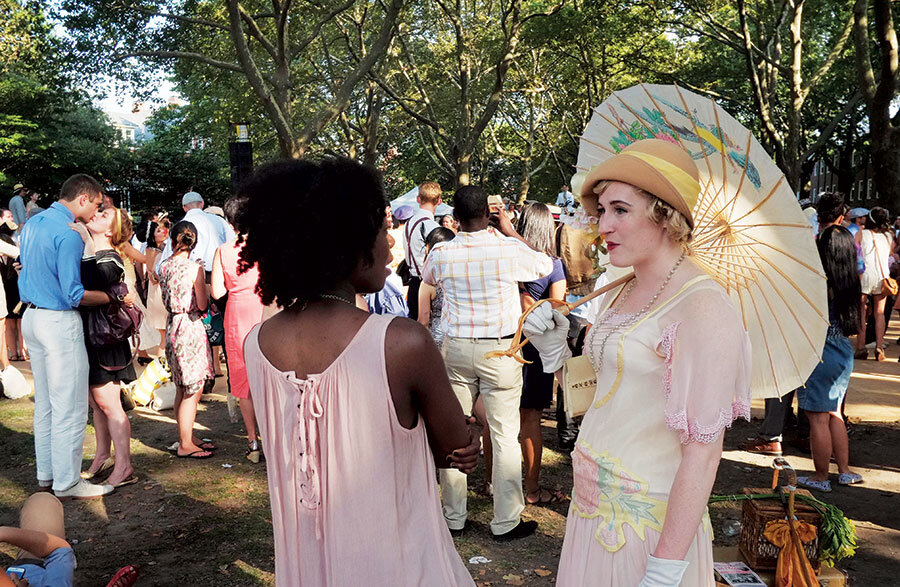Hats, pearls, and all that jazz woo style mavens
Loading...
The Jazz Age. It’s when Victorian dinner tuxedos transitioned into pinstriped suits, and long gowns gave way to the shorter hemlines of flapper dresses. It was a moment of unprecedented change in cultural styles, and true to the rhythms of haute recycling, old-time glamour appears to be back.
From worldwide exhibits to popular entertainment to packed cultural events, the elegant and tailored lines of early 20th-century clothing show no signs of being tucked away in mothballs.
Baz Luhrmann’s recent remake of the Roaring ’20s classic “The Great Gatsby” featured a glitzy costume collection put together by fashion dream team Catherine Martin and Miuccia Prada. The collection – with its lamé, sequins, silk taffeta, and dyed fur – made stops in London, New York, Tokyo, and Shanghai, China. With star-studded openings featuring sketches and stills from the film, the exhibit has settled in Caudry, France, home of lace manufacturer Solstiss, which provided many of the laces and designs used in the film.
Similarly, PBS’s fan-obsessed show “Downton Abbey,” which inspired a contemporary line by Ralph Lauren in 2012, will have its extensive 1900s costumes – practically characters themselves – designed by Susannah Buxton on display at the Winterthur Museum in Wilmington, Del., through January 2015. “We found that ... for a lot of people [the exhibit] was an entry point into history,” says curator Maggie Lidz, adding that it provides viewers with a tangible connection to “a time that they feel was more elegant.”
Some fans of the bygone era are taking their appreciation a step further. In June, nearly 10,000 people participated in the ninth semiannual Jazz Age Lawn Party on Governors Island in New York, with attendees in homburg hats and pearl necklaces doing the Charleston and picnicking in period style. (For comparison, about 200 people showed up for the 2005 event.) After a sold-out weekend in June, the encore event is slated to return for the third weekend in August for one more swinging party under a summer sky.







